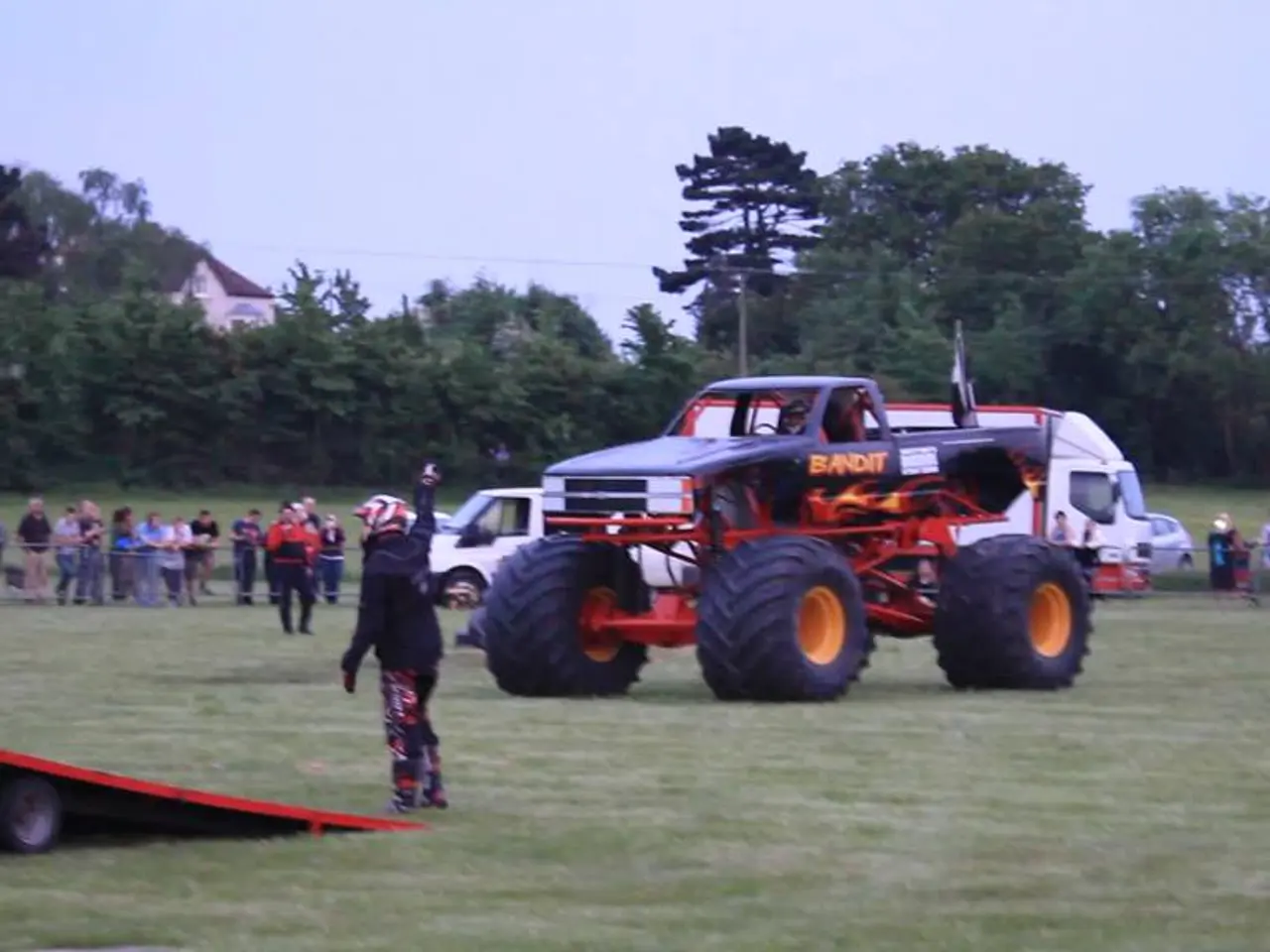Autonomous Driving at Tesla's Giga Texas Facility
Tesla Expands Autonomous Driving Technology, Plans for Robotaxi Service
Tesla is making strides in the realm of autonomous driving technology, with the latest developments taking place at its Giga Texas factory complex. The company has successfully implemented an autonomous driving feature that allows Model Y and Cybertruck vehicles to navigate the factory complex without human intervention.
This advancement is a natural progression from the autonomous driving technology introduced at Tesla's Fremont factory in California, where newly built vehicles have been navigating a 1.2-mile route from the end of the production line to the logistics lot without human intervention since earlier this year. The extension of this technology to Giga Texas marks a significant step forward, as Model Ys are now navigating approximately 2 miles (3.2km) of factory roads without human intervention until they reach their designated parking areas.
The implementation of this autonomous driving technology is expected to bring about increased efficiency, reduced reliance on human drivers, and potential cost savings for Tesla. This could also pave the way for the launch of a robotaxi service, a potential source of revenue for the company. According to CEO Elon Musk, Tesla is still on track to launch the robotaxi service in June 2025.
In Austin, Texas, Tesla has already launched its robotaxi service platform, starting with supervised autonomous rideshare operations. These operations involve Model Y vehicles monitored by safety drivers as part of ongoing real-world trials. The company has obtained a rideshare license from the Texas Department of Licensing and Regulation, which legally permits Tesla to operate its robotaxi service under new state rules starting September 1, 2025.
While the current model still requires safety drivers during testing, the regulatory clearance and licensing acquired in Texas lay the groundwork for transitioning to fully unsupervised commercial robotaxi operations. Tesla aims to commence commercial unsupervised robotaxi operations imminently following regulatory approval around or after September 2025.
The expansion of Tesla's autonomous driving technology and the impending launch of the robotaxi service are further indications of the company's commitment to autonomous driving technology. If successful, this could mark a significant step in the development of autonomous transportation. However, the success of the robotaxi service could depend on factors such as public acceptance, regulatory approval, and the reliability of the autonomous driving technology.
[1] Tesla's Full Self-Driving (FSD) system has been upgraded with an AI upgrade that increases the parameter size by about 10 times, incorporating advanced AI and video compression. This upgraded system aims to enable Tesla vehicles to navigate with minimal driver input, although it still requires driver supervision for now.
[2] Tesla began testing supervised autonomous rideshare operations in Austin with Model Y vehicles monitored by safety drivers as part of ongoing real-world trials. The company has obtained a rideshare license from the Texas Department of Licensing and Regulation, which legally permits the company to operate its robotaxi service under new state rules starting September 1, 2025.
[3] Elon Musk has indicated significant scaling of the robotaxi fleet, pointing to a broad national rollout from the Austin launch point.
[4] Tesla launched its supervised robotaxi service in Austin in June 2025 and has rapidly expanded the geofenced service area, growing from about 20 square miles initially to nearly 80 square miles by early August 2025, which is now comparable in size to Waymo’s service area in Austin.
[5] Tesla has also expanded FSD capabilities internationally, launching testing and preparation for deployment in countries like Japan and Thailand in 2025.
The implementation of Tesla's Full Self-Driving (FSD) system, equipped with advanced AI and video compression, aims to enable electric-vehicles like Model Y and Cybertruck to navigate with minimal driver input, signifying a significant step toward a lifestyle embracing electric-vehicles and autonomous technology. With the planned launch of robotaxi service, Tesla is poised to revolutionize urban transportation, emphasizing technology's role in reshaping our lifestyles.




